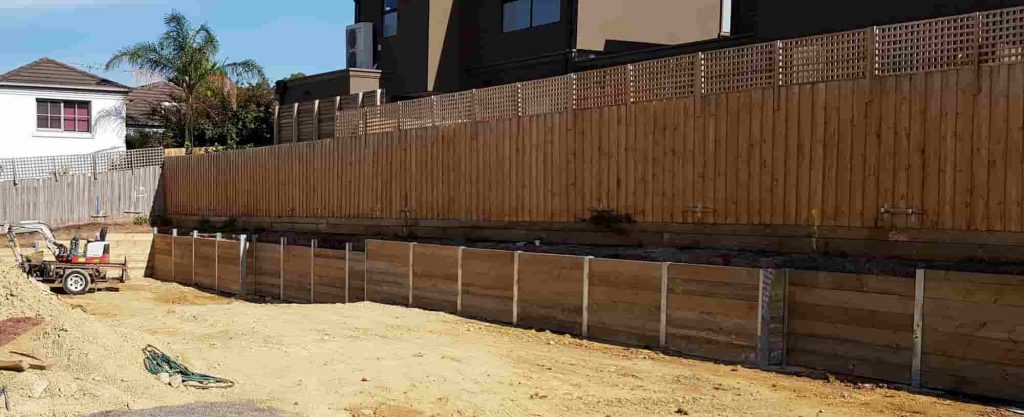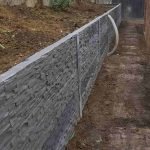Introduction
Building a retaining wall can be an intimidating project for many homeowners. Whether you're seeking to manage soil erosion, produce a landscaped garden area, or simply include visual value to your property, the option in between doing it yourself (DO IT YOURSELF) or hiring a professional can significantly affect the result. In this guide, we'll dive deep into the pros and cons of each approach, discussing various products such as wood sleepers and concrete sleepers, along with structural alternatives like H beams. By the end, you'll have a clearer understanding of which course is best for your needs.
Retaining Wall Setup: DIY vs. Professional Help
When thinking about Retaining Wall Installation: do it yourself vs. Professional Help, there are several aspects at play-- budget, skill level, time restraints, and the complexity of the job. With do it yourself projects, you tap into personal imagination and potentially save money however threat neglecting critical information that specialists would manage with ease.
Understanding Keeping Walls
Before we explore the benefits of each alternative, it's vital to comprehend what a retaining wall is and its purposes. Keeping walls are structures https://hectorbuildersdcva449.mystrikingly.com/ created to hold back soil and prevent erosion on sloped landscapes. They can be made from various products including:
- Timber Sleeper Walls: Made from treated wood; often utilized for smaller walls. Concrete Sleeper Walls: Resilient alternatives that use a contemporary look. H Beam Structures: Steel frames that offer robust assistance for bigger projects.
Why You Might Select DIY
Cost Savings
Among the most compelling factors homeowners select do it yourself is budget cost savings. Labor expenses can substantially inflate job expenditures; by doing it yourself, you keep more cash in your pocket.
Creative Control
Going the do it yourself route provides you complete control over style choices-- from product selection to aesthetics.
Learning Experience
Tackling a retaining wall setup can be an instructional journey that improves your abilities in landscaping and construction.
Challenges of DIY Retaining Wall Installation
Even with all these benefits, there are obstacles to consider:
- Skill Level: Not everyone has experience in building and construction or landscaping. Time Dedication: Developing a retaining wall is not almost physical labor; it also requires cautious planning. Permits and Laws: Some locations require permits for structural installations; failing to comply might lead to fines or restoring costs.
Professional Assistance: The Benefits
While do it yourself uses versatility and cost savings, employing professionals likewise has considerable advantages:
Expertise Matters
Professionals bring years of experience to the table. Their knowledge makes sure that your retaining wall will not just look excellent but likewise stand the test of time against ecological pressures.
Quality Materials
Professionals typically have connections with suppliers that permit them access to premium materials-- be it resilient concrete sleepers or dealt with wood sleepers-- that may not be easily offered to the average homeowner.
Time Efficiency
Professionals usually complete projects much faster than DIYers due to their familiarity with treatments and tools. This indicates less disturbance around your home during installation.

Weighing Your Options: An In-depth Comparison
|Requirements|DO IT YOURSELF|Professional Assistance|| ---------------------|---------------------------------|---------------------------------------|| Cost|Lower|Greater than do it yourself|| Skill Level|Requires standard skills|High level of competence needed|| Time|Longer due to inexperience|Quicker completion|| Product Quality|Variable quality|Normally higher quality|| Style Flexibility|Total control|Limited input on style|| Compliance|May neglect regulations|Well-informed about regional codes|
Selecting Products for Your Retaining Wall
When setting up a retaining wall, picking proper materials is important. Here's a breakdown:
1. Timber Sleepers
Timber sleeper walls are aesthetically attractive and mix well with natural landscapes. They're economical but need upkeep with time due to weathering.
2. Concrete Sleepers
Concrete sleepers are more durable and need less maintenance compared to lumber equivalents. They work well in bigger setups where strength is paramount.
3. H Beams
For durable applications requiring significant weight assistance, H beams provide structural stability beyond common residential requirements but come at a greater rate point.
Installation Process Overview
Regardless of whether you choose do it yourself or professional assistance, understanding the setup process helps set expectations:
Planning & Style: Examine your landscape and decide on height and style. Material Selection: Choose in between lumber sleepers, concrete sleepers, or H beams based upon needs. Excavation: Dig out space for footings if necessary. Foundation Preparation: Ensure appropriate drain is resolved before laying any materials. Wall Construction: Usage techniques suitable for chosen products-- stacking wood or pouring concrete. Finishing Touches: Include any wanted landscaping features such as plants or stones around the wall.FAQ Section
1. What's the typical cost of developing a retaining wall?
The expense varies widely based on material option and wall size however typically varies from $15-$50 per square foot when employing professionals.
2. Can I install a retaining wall without permits?
In lots of cases yes-- however constantly examine regional building codes as some jurisdictions need authorizations even for small structures.
3. The length of time do timber sleeper walls last?
When effectively kept, timber sleeper walls can last anywhere from 15-30 years depending upon conditions and treatment methods used.

4. Is drain crucial for retaining walls?
Absolutely! Proper drain avoids water accumulation behind the wall which can cause press accumulation and failure over time.
5. What's better: concrete or lumber sleepers?
It depends on your particular needs; concrete offers durability while lumber supplies aesthetic warmth however requires more upkeep.

6. Can I hire experts just for consultation?
Yes! Many specialists use assessment services where they offer skilled suggestions without handling full setup work.
Conclusion
Choosing in between do it yourself installation of a retaining wall versus hiring professional assistance isn't simply about expense-- it's about weighing knowledge against individual effort, benefit against discovering opportunities, and immediate results versus long-lasting sturdiness concerns like those brought by using various materials such as lumber sleepers or concrete sleepers together with structural components like H beams.
Ultimately, evaluate your circumstance thoroughly: Do you have the abilities? The time? The desire? Or would you choose peace of mind understanding skilled experts deal with everything? Whatever path you choose-- with comprehensive research and preparation-- you'll make sure that your retaining wall serves its purpose successfully while enhancing your outside area's charm!
In closing this extensive guide on "Retaining Wall Setup: DIY vs Professional Aid," remember that both paths offer unique advantages customized to various choices-- your decision needs to resonate with what finest fits your lifestyle!